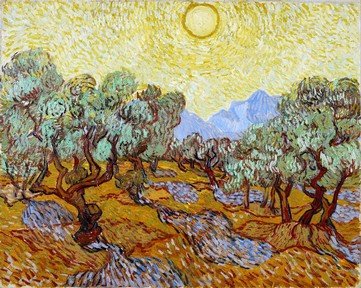Quiz Answer Key and Fun Facts
1. Lucas Cranach the Elder made over thirty paintings of a biblical woman. She is portrayed nude (but for a red hat in one of Cranach's paintings and a transparent veil in some other of his paintings). Other artists have preferred to depict this woman holding an apple. Who was this female nude?
2. In a painting by Artemisia Gentileschi, Susanna is harassed by two old men while taking a bath. Almost all other paintings of Susanna show the two elders (however, you have to search all the picture in Tintoretto's painting).
Why do most paintings of Susanna and the elders depict *two* old men?
3. Hans Memling shows us Bathsheba when leaving her bath. This scene was so delightful that a king of Israel fell in love with this woman and married her. The fact that Bathsheba was previously married to someone else, didn't bother the king; he sent the first husband on a lethal expedition. Who was this king of Israel?
4. The French sculptor Etienne Falconet made a statue of a mythical Greek sculptor. This Greek made a statue of a nude woman and fell in love with the statue. Aphrodite, the goddess of love, granted the Greek sculptor a wish and made the statue live. So the Greek sculptor had his own creation, Galatea, to make love to.
I don't tell you this love story for free, of course. You'll have to answer me the name of the Greek sculptor. If you're right, you'll get 10 points as a reward.
5. The Greek hero Perseus fell in love with Andromeda. Alas, Andromeda was chained to a rock and guarded by some monster. This myth has inspired at least four artists. However, their approach to the subject is slightly different. Three of them depict how Perseus (aided by one or more angels) liberates Andromeda, and only one of them has made a painting in which we can witness the start of the story: the Nereids chain the nude Andromeda to the rock. Which French artist, born in 1819, has painted Andromeda without Perseus coming to her rescue?
6. In a painting by Titian, Danae lies nude while a shower of gold pieces appears. Maybe you didn't notice, but Danae's servant does something the Greek myth doesn't mention. What does the servant do?
7. One of the most notorious female nudes is of course Botticelli's painting "The Birth of Venus". You'll certainly know the outline of this scene: two persons at the left (representing Zephyr, one of the wind gods, and a minor nymph) blow at Venus, nude, rising up in front of a seashell. To the right, there is another person (one of the goddesses of seasons), handing out a cloak.
The Venus depicted by Botticelli has long hair, to her hips. The far ends of her hair cover what has to be covered.
Some of you might have guessed where this is all leading up to. Indeed, my question is: what material can best be used to describe the colour of Venus' hair?
8. A statue by Giambologna depicts one of the most dramatic scenes of early Roman myth (or history, as some say).
The city of Rome lacked female inhabitants. So the Romans organised a banquet to which they invited a neighbouring tribe. At the height of the festivities, a Roman superior gave a sign and every able man grabbed one of the women and took them away.
Giambologna's statue shows us one (nude) Roman eloping with his (nude) bride to be, whilst trampling the woman's actual husband (also nude). To which tribe did these women belong?
9. Peter Paul Rubens painted "The Three Graces" in 1639. I'll give you four names of Greek women. Which one of these women was *not* one of the Graces appearing on Rubens' painting?
10. François Boucher painted, in 1742, Diana when leaving her bath. What does she wear that makes us recognise this nude woman as Diana?
11. Lucas Cranach the Elder has frequently depicted a girl from Roman myth. According to legend, this girl committed suicide because the Roman crown prince Tarquin had raped her. What was her name?
12. Guido Reni depicted the last queen of Egypt, Cleopatra VII, just before she would die. How did Cleopatra die?
13. The Belgian painter Antoine Wiertz made in 1847 a painting entitled "La belle Rosine" ("The Lovely Rosine"). The title character is a naked young woman watching something that reminds her of her own mortality. Which object makes her think?
14. Gustave Courbet made, in 1866, a painting that left the art critics flabbergasted. The painting represents a woman dressed in only a white shirt, while she pulls this shirt up over her head. To add to the scandal, the model has spread her legs and the point of view of the painter is situated roughly between the model's knees. I wouldn't like to pose in this way... What is the title of this artwork that would still in the twenty-first century be "x-rated"?
15. When Francisco de Goya exhibited his painting "The Nude Maya" in 1800, a storm of criticism arose. Goya had displayed a profane full-length female frontal nude, what wasn't done before (according to those critics). However, Goya was *not* the first to pull off such a stunt. Which of the following paintings shows us a profane full-length female frontal nude and was made before 1800?
Source: Author
JanIQ
This quiz was reviewed by FunTrivia editor
agony before going online.
Any errors found in FunTrivia content are routinely corrected through our feedback system.

